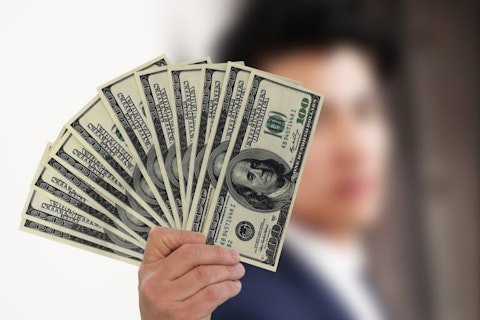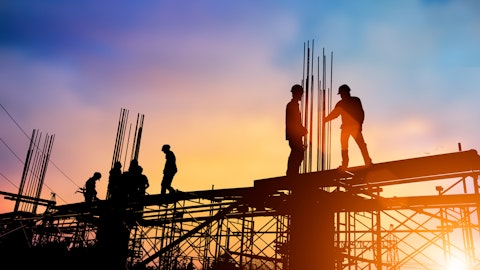In this article we take a look at the 30 richest cities in the United States. Click to skip ahead and jump to the 10 richest cities in the United States.
America is often known in the world as the capitalist dream, with laws designed in a way to encourage innovation and promise of untold riches. There are dozens of success stories of companies starting from garages, and becoming some of the biggest companies in the world, such as Apple (NASDAQ:AAPL), Google (NASDAQ:GOOG) and Amazon. The success of these companies have made some of them cross the $1 trillion threshold, while the owners have made tens of billions of dollars, some even crossing a hundred billion in net worth. Amazon (NASDAQ:AMZN) founder Jeff Bezos has a net worth of $175 billion today, having more money than several countries across the world.
While these stories are told to everyone to show how America gives everyone equal opportunity, and success only depends on hard work, this theme falls afoul of the fallacy known as the survivorship bias. What survivorship bias means is that we tend to focus on the success stories i.e. those who made it rather than those who did not because of a lack of visibility. This is despite the fact that the vast majority comprises of those who have not made it, and that there are unique conditions that have led to success in these cases, including a huge amount of luck, which has no logical explanation behind it.

Pixabay/Public Domain
The wealth distribution in America is incredible for all the wrong reasons. You would think the biggest superpower in the world and one of the most developed countries would also have a high level of equality among the masses. The truth is a complete 180 turn, with wealth inequality in the US being incredibly high. The wealthiest 1% of Americans hold an amazing 40% of all wealth. The bottom 90% hold less than 25% of the total wealth. 25% of the total families in US don’t even have $10,000. And this isn’t a common theme throughout history, it has actually increased significantly over time. In 1989, the bottom 90% had a third of all wealth, now down to a quarter. The wealth of the top 1% was 30% then, still a lot, but at least 10% below what it is now. 84% of the families in the US have less wealth than the mean for the country. Why that is, I will explain later on in the methodology section. In fact, this high concentration of wealth and relative inequality is why many propose a strict progressive system for taxation, to increase the tax on ultra high net worth individuals, which has of course been strongly opposed since these are the men and women who directly or indirectly, exert a huge amount of influence and control.
This situation has worsened considerably in 2020. 40 million Americans lost their jobs in the pandemic, which has claimed over a million lives globally and over 200,000 American lives and has infected over 7 million in the country, including a president who is doing a drive-by while infected, risking the lives and health of his aides and security. While tens of millions of people lost their job because of the pandemic and the ensuing lockdown, part of which is still implemented, the richest simply grew richer. And not just by a million or two. Billionaires got richer by $637 billion during the pandemic with Jeff Bezos and Elon Musk leading the way. If you want to learn more about how the billionaires got richer, you should consider taking a look at the top 20 richest people in the world. Yet, because we will follow anyone with a comparatively higher success rate than us, we still worship these people even as we don’t know where our next paycheck will come from, while they worry about the size of the yacht they should be getting.
To calculate our rankings, we thought of several ways, including determining the richest cities by the number of millionaire or billionaires they had. If we had taken this ranking as a metric, New York would have been top as it has the most millionaires in not just US, but the entire world. But this would only show the affluent and well off population, those who had actually attained success and not be representative of the entire city. Another option was using the mean, or the average earnings of each city. This however led to another problem. Imagine if there are 10 people, where 9 people earn $100,000 and the tenth person earned $10 million. The mean, or the average, would be $1.09 million even though 9 out of 10 people would be earning just a tenth of that. That again would not be representative of the entire population. This is why we selected the median salary. To calculate the median, you arrange the numbers from lowest to highest and select the middlemost value. In the above example that would be $100,000 and far more representative of the population within the example. Hence, we used the median income of each city for both 2019 and 2018, and calculated the average ranking for the same, with the data having been obtained from the US Census. So let’s take a look at the cities where you are more than likely to be well off, rather than not, starting with number 30:
30. Ogden-Clearfield, UT Metro Area
Median salary in the city in 2019 in USD: 79,251
Median salary in the city in 2018 in USD: 76,653
The least richest city in our list still earns nearly $80,000 which is a solid salary almost anywhere.

Pixabay/Public Domain





